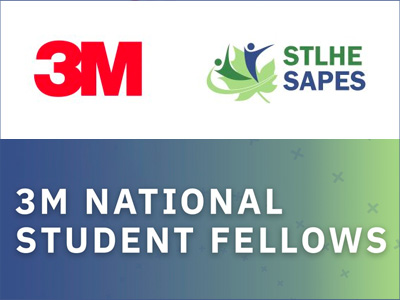I began incorporating digital technology into my teaching in fall 2016 when I taught my first class, a 3000-level seminar on digital media and culture composed of students completing their degree in communication studies. Since we were exploring topics of digital citizenship, I thought a class Twitter would be an excellent and engaging assignment. Students were required to post weekly about the readings, developing the skills to succinctly condense complex media theory into 140 characters. I also thought this was an inclusive and accessible assignment. Students shy to participate during class discussions might find this a great alternative for sharing their insights, and of course everyone nowadays has a social media account. Most importantly, I thought this assignment would be an excellent way for my students to develop their digital literacy skills, a concept which Meg Coffin Murray and Jorge Pérez argue is based upon three principles: the skills and expertise required to understand how to use technology through the application of hardware and software; the ability to critically evaluate digital material; and the capacity to create with and communicate through digital technologies and platforms (86). When my class Twitter was not as positively received by my students as I initially imagined, I was defeated. I have come to realize however, that I made numerous assumptions about the relationship between pedagogy, student learning, and technology in developing digital literacy skills through assessments like Twitter.
Drawing upon the theoretical positioning of Marshall McLuhan, technology, in its most broad sense, encompasses any material device or system that prolongs our skills and capacities (Slack 2017). Within my discipline of media studies, we critically examine technology for/as communication, interrogating how it is situated within larger ideological frameworks of class, race, labour, gender, colonialism, and neoliberalism (Sharma and Singh 1-11). We are simultaneously preparing our students to become professional communicators, thereby requiring digital technology like social media platforms to become essential components of our course design (Fernback 1-9). This connection between theory, practice, and pedagogy as mediated through technology takes on greater significance as Twitter and TikTok become major industry platforms students will need to navigate in their careers. By learning how to critically analyze digital technology through media theory, students are developing that aspect of digital literacy, as they did in my 3000-level seminar.
Where I really struggled in my 3000-level Twitter assignment is in developing the other characteristics that compose digital literacy: the skills required to effectively use digital technologies and the ability to create and communicate through digital media. Professors (including myself) incorporating digital technology into course assessments make assumptions about their younger students being “digital natives” who grew up with these technologies (Alvi 2018; Schwartzman 2020; Williamson, Eynon, and Potter 2020). Highlighting how COVID-19 facilitated a mass shift towards instructors incorporating digital technology into their courses for the first time, Schwartzman argues that the “the structures and delivery modes of courses are value-laden and ideologically infused. More precisely, the pandemic forces confrontation with how much instruction rests upon presumptions of privilege” (508). Building upon his argument, some students do not have access to either a personal or family computer or device. Many digital assignments require more editing time and platform-based capabilities that can be challenging for students to balance and cultivate alongside other responsibilities. Identifying these presumptions when designing assessments to further develop digital literacy skills requires us to acknowledge that these digital inequalities not only continue to exist but are often normalized by these platforms.
The final principle of digital literacy identified by Murray and Pérez is in applying theory, skills, and knowledge to create digital media, whether that be in creating a Twitter thread in my 3000-level seminar or a TikTok vlog (something I have also started assigning in my courses). I first implemented digital technology into assessments to provide students with a more professional understanding of these platforms than what they may gain in their personal use, with the intention that they can add their course assignments to a portfolio or discuss in job interviews. This aspect of digital literacy within the context of the university classroom is fundamentally a neoliberal approach to postsecondary education, which transforms students into consumers purchasing a degree with professors functioning to prepare them for the job market (Jones 2019). As a career academic, I struggle with promoting neoliberal-oriented digital platforms in my course assessments when I do not have the industry experience to legitimize my pedagogy.
Prioritizing assignments that require specific knowledge and practice to develop digital literacy skills continues to sit uncomfortably with me since that first experience with Twitter in my 3000-level seminar. With each digital assessment I design, I become more aware of the assumptions and inequalities embedded within digital technology. I recognize that socio-technologic shifts demand students need experience with digital modes of communication, but I must question what normative ideological assumptions I am reproducing through assessments with Twitter and TikTok.
Works Cited
Alvi, Shahid. “Marrying Digital and Analogue with Generation Z: Confronting the Moral Panic of Digital Learning in Late Modern Society.” Transforming Our World Through Design, Diversity and Education. IOS Press, 2018. 444-453.
Fernback, Jan. Teaching Communication and Media Studies: Pedagogy and Practice. Routledge, 2015.
Jones, Chris. “Capital, Neoliberalism and Educational Technology.” Postdigital Science and Education, vol. 1, 2019, pp. 288-292.
Murray, Meg Coffin and Jorge Pérez. “Unraveling the Digital Literacy Paradox: How Higher Education Fails at the Fourth Literacy.” Issues in Informing Science and Information Technology, vol. 11, 2014, pp. 85-100.
Schwartzman, Roy. “Performing Pandemic Pedagogy.” Communication Education, vol. 69, no. 4, 2020, pp. 502-517.
Sharma, Sarah and Rianka Singh, eds. Re-Understanding Media: Feminist Extensions of Marshall McLuhan. Duke University Press, 2022.
Slack, Jennifer Daryl. “Technology.” Keywords for Media Studies, edited by Laurie Ouellette and Jonathan Gray, New York University Press, 2017, pp. 191-193.
Williamson, Ben, Rebecca Eynon, and John Potter. “Pandemic Politics, Pedagogies and Practices: Digital Technologies and Distance Education During the Coronavirus Emergency.” Learning, Media and Technology, vol. 45, no. 2, 2020, pp. 107-114.
Aidan Moir is an Assistant Professor in the Department of Communication, Media and Film at the University of Windsor. She received her PhD in Communication & Culture from York University. Her research analyzes the circulation of campaigns across popular media. Her teaching interests focus on technology for/as learning, particularly regarding ways to incorporate social media like TikTok into course assessments.










Comments